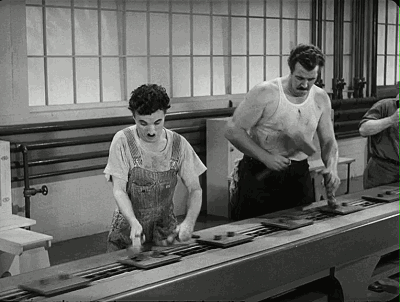
Rene Magritte
Golconda,1953. The Pilgrim, 1966
Rene Magritte is a Belgian surrealist painter. He focuses on creating fantastic, mysterious and quiet images full of special ideas. His paintings are like riddles, which make people conjecture. There is a kind of dead silence in the works. Obvious sign language. His works often endow familiar objects with a brand-new meaning, or twist together irrelevant things, giving people a sense of absurdity and humor.
I also focus on some familiar things in life and give them new concepts and meanings. If you regard painting as symbolism, whether it is intentional or unintentional, people will always ignore its true nature. People always start from the practicality of things in life, but will not look for the symbolic meaning.
But when faced with painting, they found that painting was not practical at all, so they looked around for meaning in order to free themselves from confusion. People need things they can rely on so that they can feel comfortable and save themselves. Falling into emptiness and confusion. Therefore, we need to show things to people by painting, let people think and feel. He provided some inspiration for my work "The Absurd World".
Bas Jan Ader
He is a conceptual artist (some people call it conceptual art or accidental art) and a performance artist, writer, photographer, and experimental short film producer. Gravity is often used as a medium of expression in his works to express falling and loss. In addition to falling and losing, Ader also repeatedly performed another theme-the heroic pursuit of being weakened by hypocrisy. All kinds of behaviors in the works are written and directed by him, which arouses sincerity in people's hearts.
Interpreting Ade from the perspective of romanticism, he pays attention to the tradition of romanticism and the concept of melancholy. At the same time, his works also discuss the connection between the inherent subjectivity of romanticism and the cold objectivity of conceptual art . Ade's constant volume and his compatriot Piet Mondrian shaped the driving force of existentialism. It is under this impulse that his famous "Fall" series of works appeared.
Fall 1, 1970. Fall 2, 1970
In "Fall 1" he sits on a chair on the roof of a two-story building, and then lets himself fall from the roof without any resistance. In the same year, he created another video “Fall 2”. In that piece, Edel rode a bicycle in the street, holding a bunch of flowers, and plunged into a canal in Amsterdam.
The Fall series of works have been practiced in the Netherlands and Los Angeles respectively. Ade completed the visual presentation of the concept of the fall without any description of the cause and effect. These actions evoke the tragic fall of the heroic image in the Greek drama, and at the same time evoke the Chaplin style. The comedy effect.
Ader's work made me feel the division, the artist's emotion and reason, consciousness and body, separated in the work, and the artist has become the subject and the object at the same time. This is also reflected in his use of falling and falling as elements. I also want to develop this practice by always focusing my artistic interests on everyday objects. Even if I use my body to feel and carry this power, my works will show the visual effect of falling, which is dramatic and absurd. Ader himself once said that his work is about gravity. The body is the medium of gravity. He is using his body to feel, carry, and present the inescapable force of gravity.
Owen Gent
Owen Gent is not only a freelance illustrator, but also a graphic designer and animator.
His illustrations combine folk painting elements with contemporary illustration techniques to explore people’s inner worlds, portraying the "unspoken words" in their hearts as a majestic dream and surreal world, with a touch of sadness, a kind of downward The power, the inexplicable blur, makes people involuntarily immersed in it, pure thinking and awakening in silence. This is what attracts me very much, and I want to express this feeling. My work is also a bit biased towards the form of illustration, and both the character image and the overall environment have something in common with him.
Huge body, hollow or melancholic expression, are typical images created by Owen Gent. He has only a body, no name, no specific image and gender, perhaps the "me" who is at the end of the world and the cold wonderland at the same time. Surrounded by a sense of isolation from the world, "I" is like an iceberg that nobody knows in the depths of the sea, melting bit by bit in the dark night.
Daehyun Kim
Daehyun Kim is a Korean visual artist, Moonassi is his stage name, which can roughly be translated as "I don't have a so-called me" or "I am empty". When people call him "Moonassi", it's like calling someone without identity.
He is fascinated by philosophy and likes to study the relationship between time and space, the cycle of death and the meaning of existence.
The characters in his pens have no obvious expressions but have similar faces and distorted body postures, which are extremely surreal and absurd in the strong contrast of black and white.
Like him, I think black is simple and direct, has a strong sense of visual impact, and makes myself feel free when painting. So my animations are mostly black and white. The protagonist in his black and white illustrations usually only has himself and the shadow, no audience, no voice, only the dialogue and interaction between himself and his heart. From these faces we cannot see sadness or happiness, gender, nationality and age. I think that dealing with the image of a character in this way is the best prop for closing emotions, and it can focus people's attention only on the physical performance of the character.
Marrhias Brown
Atalanta Graphic Designer Matthias Brown loves to experiment with rotoscoping and other tracking animations. He uses paper paintings to create endless loops of animation. The simple style of painting makes the works full of humor. Also because of him, I started to try to make gifs, turning a flat painting into a moving picture, and I want to put the work into the real world, which adds interest and vividness.
Julian Opie
Julian Opie is one of the representative figures of the New England sculpture movement in the 1980s. His creation is diversified, including paintings, sculptures, installations and videos, and various cross-border collaborations.
Most of his creative themes come from familiar daily life and urban images. He uses bold black outlines, simplified facial expressions, and saturated bright colors, which are simple and beautiful. These pictures are like mirrors of modern cities, In a portrait of his painting, we seem to see ourselves.
I also once thought of putting my work in an urban environment, so that every character can enter the real world. Or make it into an animation, so that people who are still on the wall can move, as if the reality and the illusory world are combined. Dynamic images can add more interactivity to the work. When they appear in the crowd, the audience becomes a part of the work. I want people to integrate into the work more closely, as if they exist in their own lives. The virtual world formed by modern technology and the Internet has created too much temptation for people to "distance" from reality. I don't want this feeling of being separated from the real world to appear in my works.
Imogen Walking. 2016
Julian Opie has also created many dynamic images and public installations. Even in a static picture, we can also feel that he is depicting a state of "moving": like this statue of a walking person walking hurriedly in the city, without additional explanation, we can understand that the work in front of us is expressing what. Julian Opie once said:
All my artistic creations are the way images in this world are made and presented. Humans transform their impressions and understanding of the world into images, mirror what we see, and interpret the world. This fascinates me.
Yoann Bourgeois
Yoann Bourgeois focus on circus performing arts and modern dance. He is particularly fascinated by the weightlessness of the human body. The object is hovering at the apex of the parabola, and the moment when it will not fall is fleeting, but it has irreplaceable beauty.
Mechanics of History, Paris, 2017.10.14
Such as The Mechanics of History, the dancers kept falling and jumping from high places, but they could not reach the top of the stairs. It is easy for the audience to get excited when they first look at the work, but the deep meaning behind the work is far more than just falling and standing repeatedly. History will not repeat itself, but humans will repeat the same mistakes throughout the development of history, making you feel that everything is an endless loop of closed loops.
This performance was inspired by the character Sisyphus in Greek mythology. As the punished god, Sisyphus must push a boulder to the top of the mountain, and every time the boulder is about to reach the top of the mountain, it will roll back down the mountain, repeating the cycle, endlessly. Bourgeois believes that this endless loop actually implies the complexity of movement.
This makes people feel like the process of interpreting a living body. Constantly falling and jumping, finding balance in the changes, and finally returning to tranquility.
I also feel the helplessness and hardships of human beings in real life in my works, and I have been repeating the same mistakes. I also want to try to use some performances to show what I want to express, meaningless and endless loop. Therefore, I shot some experimental videos.
Gideon Rabin
Rubin uses wider brush strokes and soft tones to give more weight to tones than colors. The characters in the work have been modified to make them look more real: people are lying in bed, bathing in the water, or sitting and meditating, but it is worth noting that these characters have no faces. The ghostly nature of these paintings and the empty landscapes show the audience a completely anonymous situation.
The characters in my oil paintings and animations all have no faces. Who are these people? What have they experienced? The lack of identity and personality means that these characters have secrets, which adds to the mystery and absurdity of the picture, which is what interests me.
Mysterious face, faceless portrait.
There is no happiness, no sadness.
No facial expressions are needed, only internal stolen goods.
Sinking in numbness, crazy in confusion.
Nickie Zimov
There is also a painter similar to Gideon Rabin’s style of painting, Nickie Zimov. He is a Russian painter. His oil paintings on paper are deeply influenced by Munch and Magritte. Only a few touches of pure lightness are very contrasting. The strong tone clearly gives the "faceless man" in the painting a very "mournful" soul.
He used the heavy black, the lonely white and the blazing red to repel and set off each other, faintly creating a sense of extreme oppression that made people breathless, sad and lonely. Even if the expression is erased, the fatigue, indifference, and restlessness of the body can still be read from the local movements. I also hope to reflect people's emotions and states through the parts and atmosphere of some characters.
Misha Gordin
"The collective is the enemy of thought, the beginning of tragedy"
She is one of the most famous contemporary photographers. Her parents survived the massacre in the concentration camps of World War II. After returning to her hometown of Latvia, she fell into a concentration camp under Soviet rule. After immigrating to the United States, she was able to create the famous "group" series.
The silent group in her works made me feel a great power and a strong visual impact. I tried to learn and imitate this feeling, but I couldn’t personally understand her situation, I could only express It looks like I am in this world, so my work does not have such a strong sense of tragedy. But her sense of form is very strong and it gave me a lot of inspiration.
In his recent work "The Group", he made a severe reflection on the attributes of the collective. A group of people who lost their individuality gathered together, either masked, or marked with the same marks on their bodies, working in unison, listening, crying, praying, bowing, and huddling together in their small boxes. The collective is the enemy of ideas. In such an organization, any hesitation and doubt will be immediately recognized and put out.
Misha Gordin's work is full of tragedy. In his works face the ignorance and pain of people. The loneliness, loneliness and perplexity can't go away. For example, the disabled person in the picture "doubt" is alone in the wilderness, with his body and limbs tied up by thick twine; we can't see his look or understand his feelings. In such a picture atmosphere, I only feel very sad. Some kind of resonance in the inner corners will also rise. This is the original intention of Misha Gordin, using digital photography to express his unique worldview, including its meaning, symbolism and mystery. I also hope that through my works, I can give people a resonance and think about the meaning of life.
Agnieszka Sosnouska
She is a female photographer. When she was studying at the Massachusetts Institute of Art, Agnieszka began to take a series of selfies, which has been going on for 25 years. "These selfies can let me know who I am and what I want to be." “Iceland’s landscape and weather have endless changes. This is a surreal world, sometimes even weird. Many ancient and mysterious elves and legends in the area also inspired my creation. In Western countries, farming and hunting are often used People are regarded as a pastime, but for me, it can be regarded as a manifestation of human will, and many of the efforts and efforts are unrequited. As a woman, I interpret it in a primitive and perceptual way The story is that when I press the shutter, fantasy and reality merge into one."
I really like this surreal photography style, which presents an absurd and meaningful world, which makes me feel the combination of reality and fantasy. She uses her body to blend in with nature and interpret cultural stories in a primitive and perceptual way. This is sometimes ordinary, sometimes purely feminine, and sometimes supernatural, in order to find a way to make private images public. . This has provided a lot of inspiration for my experimental images and photography works, and many of my photography works are somewhat similar to hers. In my future work, I will shoot more images about the body and nature, because I have always been very interested in existentialism, mainly focusing on how people look at the world, how to look at their relationship with the world, and how do people connect with their surroundings and how it reacts.
David Alvarez
Spanish illustrator David Alvarez. His illustration designs seem to shine, even though they are mostly black and white. His paintings are cute and absurd and very imaginative. I really like the group portrait he created. I can't see who is who, and I can't identify the characteristics. It seems that this can be anyone. They are exploring something together, a little confused and a little lonely. He exaggerated the characters in his paintings and created an absurd world, as if he wanted to imply something. Most of the painters I follow are mainly in black and white, which seems to have an inexplicable attraction and visual impact on me.
Andrzej Mazur
"Human form is the dominant element in my art."
Through this way of expression, Andrzej Mazur makes his works unique humanity and survival at the same time. Each character in the painting is flesh and blood, and it seems to be confined in a complex social environment network. The painter focuses on the subtle psychological relationship between the character and the surrounding environment.
Journey to the End of the Night | oil 40× 50cm Keep the Silence” egg tempera | oil 40× 50cm
He once said that his work always discusses the complexity of communication and interpersonal relationships. This is also very close to my concern. What I care about is also how people connect with their surroundings and make different reactions and states.
Andrzej Mazur is good at exploring the relationship between language, culture and the process of human cognition through works. In his works, most of the themes are chosen to describe how to interpret the world in a related way. These works reveal each Andrzej Mazur's understanding of the world. He used the form of absurd nihilism and incorporated some historical and cultural symbols to express; and he can see that he uses some intricate symbols of singing, crazy dancing and other intricate things to define his concrete thinking. This abstract and absurd way has given me a lot of inspiration, and I also use symbols to suggest or express some ideas when shooting images.
Finally, I want to use a passage from Andrzej Mazur to summarize,
"My inspiration is a complexity and depth of single individual feelings, getting out of mental barrier. In my works I'm trying to connect the way, which forms states human anxiety, intimate and difficult to articulate states."











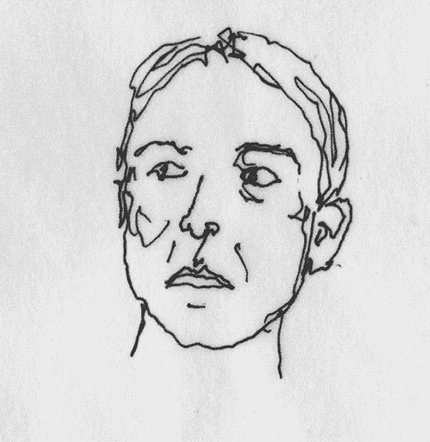


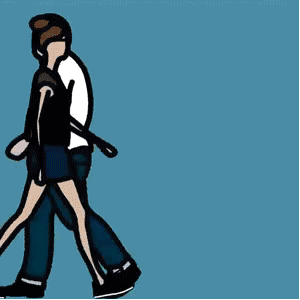


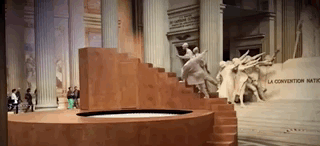
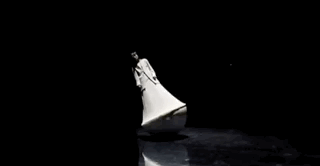















Sisyphus
As Camus’s absurd hero, Sisyphus, he was punished by the gods, pushing a boulder to the top of the mountain and letting it roll down, and then repeated this work endlessly. This is something that makes people feel a sense of futility all the time. From the perspective of the perpetrator of punishment, it is a disintegrating thing, even more terrifying than death. Some people even pointed out keenly that this is not only a physical punishment like pushing a stone, but also a conceptual punishment that requires endless efforts to do this kind of futile thing. In other words, this is a double torment of the spirit and the body, which creates a feeling of being wiped out from the body to the spirit.
It is undoubtedly a kind of absurdity to repeat the unproductive things day after day, and this kind of repetition must be repeated. Sisyphus faces this kind of absurdity every day. However, Sisyphus faced this absurdity when he understood that it was absurd, that is to say, it was a face to the absurd situation. However, in the real world, how many people are living in absurdity without realizing the absurdity of things. People do not realize that they are living in a world of absurdity, or that the absurdity itself is life, and the absurdity itself is life. At this time, absurdity is no longer a problem, because it is meaningless to treat it as a problem.
People often talk about value, and they often talk about meaning. But few people think about what is the real value and the real meaning. In the story of Sisyphus, how did he find the value in the valueless, the meaning in the meaningless? But in any case, these values and meanings may be both illusory and real.
So, as Camus revealed, Sisyphus is an absurd hero. Not only from his passion, but also from his hardship. His contempt for the gods, the hatred of death, and the love of life caused him to suffer so much that he was unspeakably suffering, so he tried his best to solve the problem but achieved nothing. I think this is a hero who surpasses success or failure.
I think Sisyphus is happy again. The struggle he had to go to the top of the mountain was enough to fill a person's heart. In this absurd mode of infinite loop, the struggle of pushing the boulder up to the top of the mountain is enough in itself to make people feel satisfied and fulfilled, just like the work I have always done, it looks like one This kind of meaningless infinite loop and repetition, but I think this kind of process is still romantic and interesting.
Modern Time
The first shot of the film is a huge clock. When the time reaches 6 o'clock, the plot officially begins. The clock is an important symbol of the industrial age. Everyone looks at the clock and repeats boring and boring tasks step by step and routinely.
Then there is a very delicate montage. There is no difference between a crowd and a flock. Comparing a crowded crowd to a lamb to be slaughtered is just a production tool driven by capital. The worker loses the ability to think and becomes a tool for the extension of the machine.
Capitalists are puzzles, but workers are working endlessly. I don't even want to leave the workers a safe time to eat. I just want to squeeze the value of the workers. They don't need to think about it, and they don't need them to improve themselves. They just ask them to complete their tasks. Capitalists will only judge that the machine is not practical, and will not care about the feelings of the workers. Workers are just tools, guinea pigs in the laboratory.
In the film "Modern Times", many people are involved in the machine (including Charlotte, his co-workers and later the foreman of the second factory). Whenever they are involved, people can do nothing but follow the gear. The rotation, like a part on the assembly line, is controlled and dismembered. This is the inevitable result of the rationalization principle in the industrial age. When an independent person obeys a mechanical system with rational principles and self-discipline, the person is only a part of this system and a replaceable digital component. This is a person who has lost subjectivity and self-consciousness, and man has become an object. And this passive object, whose activity is only a mechanical repetition of a special fixed action, can only go crazy in the end. Until now, the contradiction between the individual who pursues subjectivity and the era of computational quantification of technological rationality is still irreconcilable, and this is also the most important manifestation of materialization. Charlotte was teased by a machine in the factory. After numerous struggles, he still could not change his destiny. It also showed that the laborers were only integrated into a certain mechanical system as part of mechanization. He found that the mechanical system was ready-made. 、Operation does not depend on him at all, he must obey its laws whether he wants to or not. In this process of mechanization, the activities of workers have increasingly lost their initiative and creativity, and their lives have been confined to a smaller and smaller circle, making their eyes nostalgic for what happens around them. In some local matters, he lost his understanding and critical ability of the whole society.
I still remember a scene in "Modern Times" in which Chaplin opened the door every day, and a wood fell from the door and hit him on the head. It looked funny. Until one day when he opened the door, the wood did not fall. Chaplin walked into the room and suddenly felt something was wrong. Then he opened the door vigorously. Then the wood hit his head. He thinks it was right. When I was young, I watched "Modern Times" only because Chaplin's performance was funny and fun. Now I know this is called compulsive repetition.
A lot of pain is repeated. In modern society, in our inner and subconscious minds, almost always because of one thing repeatedly, the most painful thing in everyone's heart will cause our interpersonal relationship and life experience to be reincarnated. , Keep repeating.
This shooting technique in the modern era is very interesting. It looks like a comedy, but it actually reflects social issues. I am particularly interested in this kind of humorous and profoundly meaningful movies. This film reflects the social problems of that era, and my work reflects the spiritual dilemmas and realistic problems of contemporary people. I also hope that through this way of expression, people can think, feel my work, and feel the world.
Francis Alys
"Sometime makes something leads to nothing",Vedio,Mexico City 1997
The work Sometimes Making Something Leads to Nothing is derived from a short film taken by Belgian artist Francis Alÿs-Paradox of Practice I: In the film, the artist pushes a huge ice block through the streets of Mexico City under the scorching sun ; At 9:15 in the morning, the weight of the ice cube made the artist feel very strenuous; and by noon, the ice cube could already be kicked away by him; at 6:47 pm, the huge ice cube had become a looming piece on the sidewalk Water stains.
This piece of ice finally melted completely into water and disappeared. This is an act of useless work, but the artist has gained nothingness after long and intense physical labor. "Modern fables" like this make me rethink many questions. What is the value of labor? What else is consumed by humans every day besides labor? Even if this goes on, will human beings one day be destroyed in their own hands?
“Cuentos patrióticos” , video/25”36, Mecico Citty, 1997
This video is that he led the sheep in a circle in the square.
This video is of a woman circling her hair constantly, tying knots constantly. Knots represent bonds and connections, as well as restraint and resistance. This monochrome sketch of the female form is constantly screened.
Most of his works are performances and behaviors that take place in cities. The background of an architect is an important factor leading to his fascination with urban phenomena. He realized that he must be connected with the city through work and direct intervention, so he walked In the city is his most direct and simple way. What's interesting is that he always likes to do some seemingly futile behaviors. Maybe this behavior doesn't change anything, but it can always trigger our thinking behind the incident.
Doing "useless work" is almost the generality of all Francis Alys's works. This may be why his works always seem absurd and funny. In this utilitarian society, people are more concerned about output rather than Process and efficiency are the criteria for measuring actions. Francis Alys believes that in this kind of non-productive activity, that is, doing "useless work", there is poetry. He presents the most "terrible" facts in the world in a way that is absurd and romantic at the same time. This is the problem of "consumption" that I am concerned about. In fact, many behaviors of people in modern society are meaningless. This process is constant consumption. What we can perceive is only this process. I want to pay more attention to this aspect of behavior and how different artists express this behavior.
William Kentridge
Mark Fenton 人类学家存在主义
Matthias Brown
Nausea by Sartre




